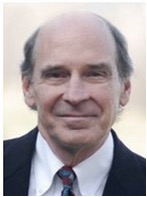 In the children’s book The Little Engine That Could, a little blue engine hauls an improbably large trainload of toys and candy over a mountain while chanting, “I think I can, I think I can, I think I can.” The Labor Department named this classic among the 100 books that shaped work in America.
In the children’s book The Little Engine That Could, a little blue engine hauls an improbably large trainload of toys and candy over a mountain while chanting, “I think I can, I think I can, I think I can.” The Labor Department named this classic among the 100 books that shaped work in America.
There’s a federal health agency in Washington that might be called the “Little Agency That Could”: the Agency for Healthcare Research and Quality (acronym “AHRQ”, pronounced “Arc”) – and it’s shaping the work of healthcare in America.
AHRQ’s priority is making the work done in healthcare benefit the patient. They assemble all the treatments, medicines, expertise, technology and medical advances, and figure out the best strategies for delivering them safely and effectively. This is very complex, and lapses and errors in delivery can and do cause unnecessary patient death and suffering on a grand scale. Avoidable errors in hospitals kill upwards of 500 people a day, making it equivalent to the third leading cause of death in the United States.
What works for the patient often defies conventional wisdom, which AHRQ has observed time and again. For instance:














